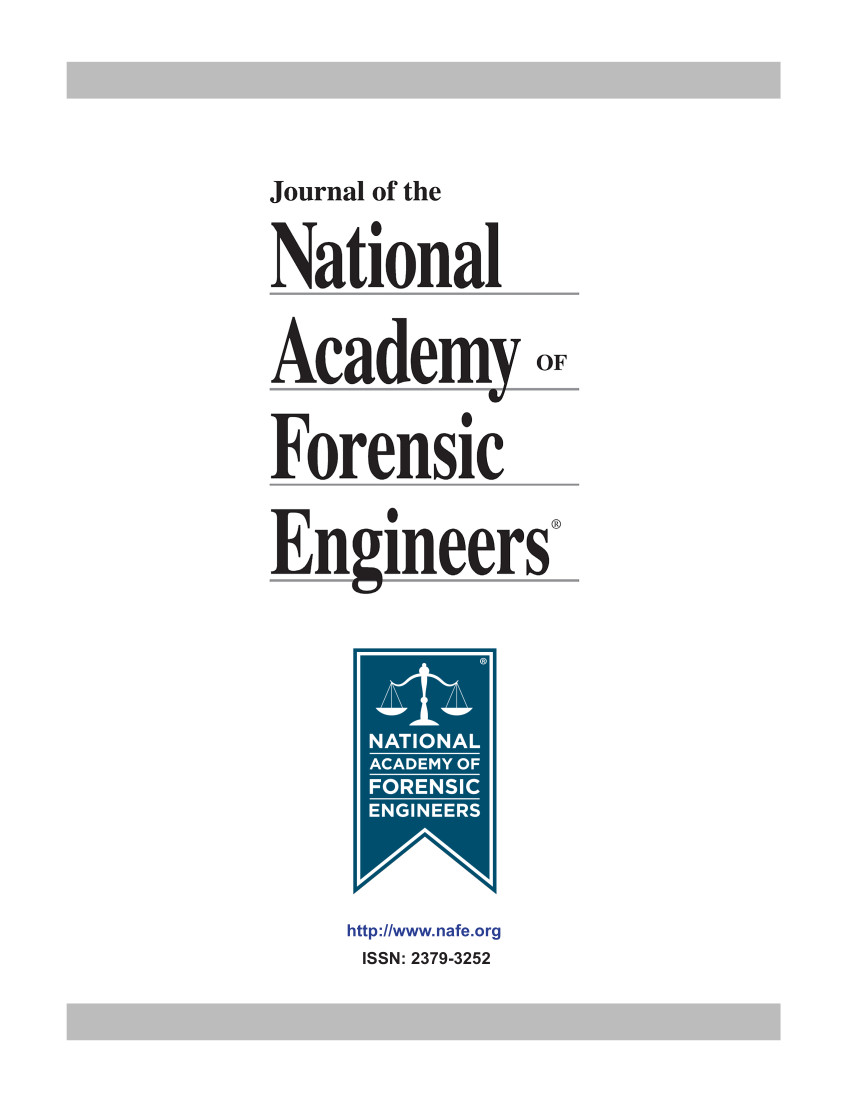Forensic Engineering Analysis Of Undeployed Air Bag In Impact
DOI:
https://doi.org/10.51501/jotnafe.v20i1.608Keywords:
Forensic engineeringAbstract
When An Accident Results In Litigation And A Forensic Engineer Is Retained By Either The Plaintiff Or The Defendant, His Responsibility Is To Define, To The Best Of His Engineering Ability, The Cause Or Source Of The Accident Together With The Attendant Factors Which Contributed To, Or May Have Prevented, The Occurrence. Further, It Is The Engineers Responsibility To Present His Observations, Findings And Conclusions Clearly And Succinctly So That They May Be Readily Understandable By The Various Parties To The Litigation And, Should The Case Go To Trial, By The Judge And By The Members Of The Jury. Whether The Forensic Engineer Is Retained By The Attorney For The Plaintiff Or For The Defendant It Is Universally Understood That The Attorney Advocates The Cause Of His Client But That The Engineer Should Present The Facts Without Advocacy Of His Clients Position. While The Engineer Must Not Advocate The Position Of His Client; Nevertheless, He Has A Responsibility To Advocate Understanding Of His Observations, Findings And Conclusions By All Parties. This Essential Responsibility For Advocation Of The Truth Is Customarily Accomplished By Preparation Of An Engineering Report, Tables, Diagrams, Formulae, Engineering Drawings, Photographs, Digitally Rendered Reconstructions Of The Event And, By Models.Published
2003-01-01
How to Cite
Ford, William H. 2003. “Forensic Engineering Analysis Of Undeployed Air Bag In Impact”. Journal of the National Academy of Forensic Engineers 20 (1). https://doi.org/10.51501/jotnafe.v20i1.608.
Issue
Section
Articles
License
Copyright (c) 2003 National Academy of Forensic Engineers

This work is licensed under a Creative Commons Attribution-NoDerivatives 4.0 International License.
All rights © Journal of the National Academy of Forensic Engineers.
Full statement regarding the author's license of copyright to the NAFE is shown on the Copyright section of the Submissions Page.






